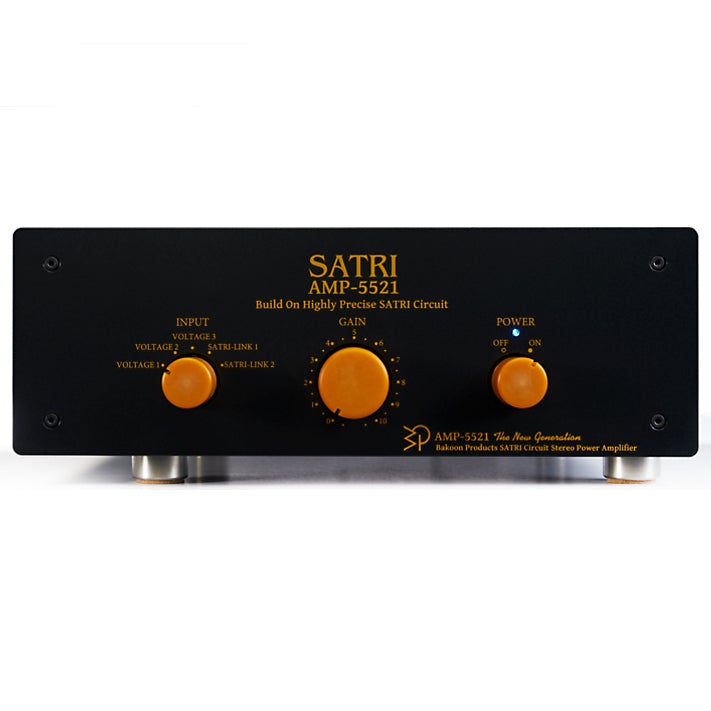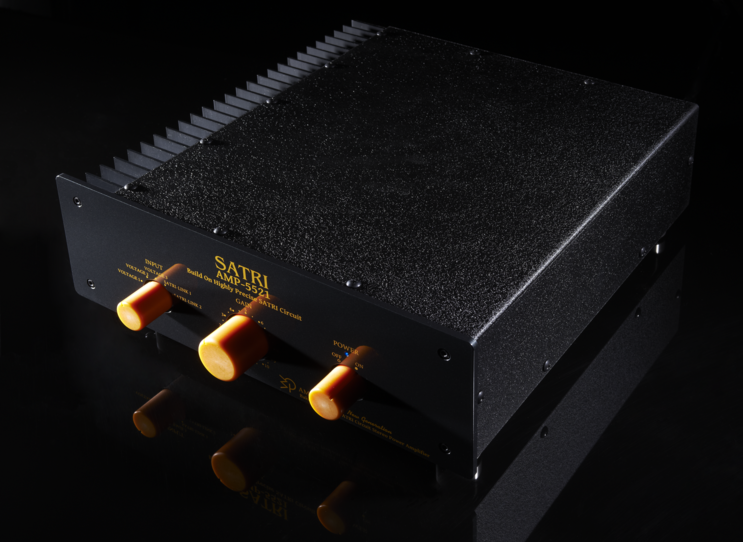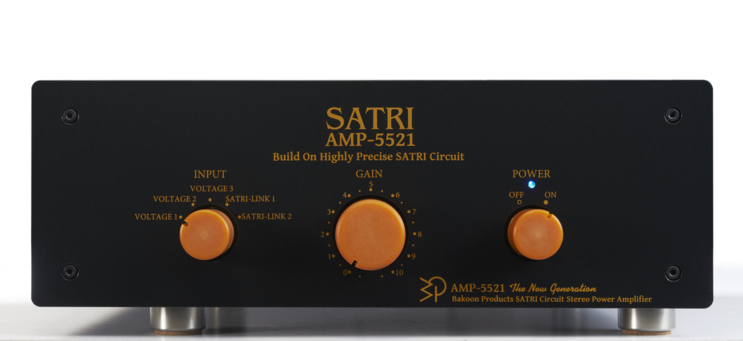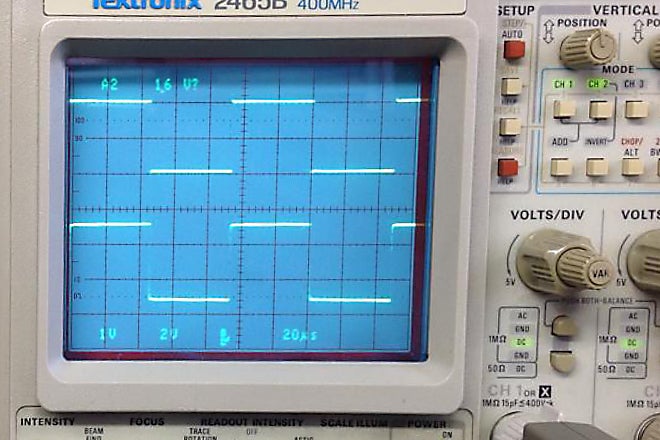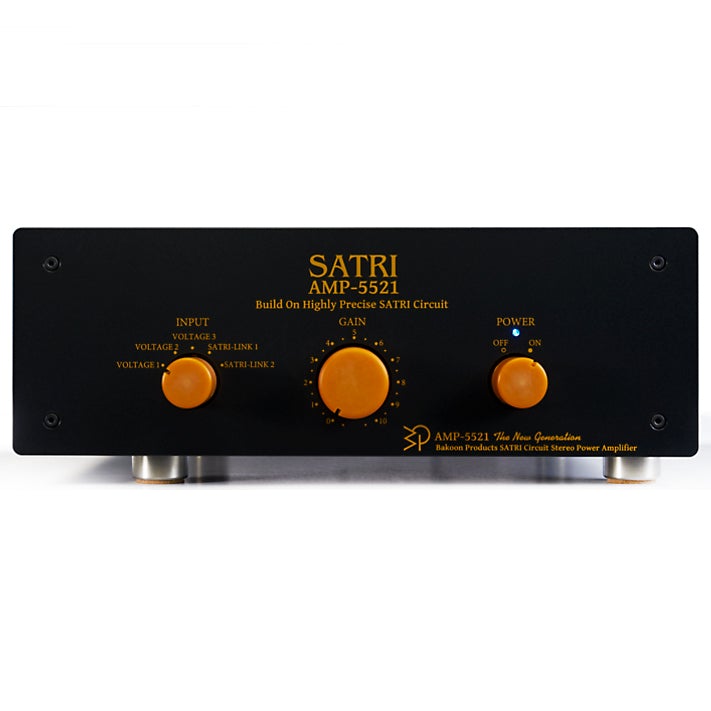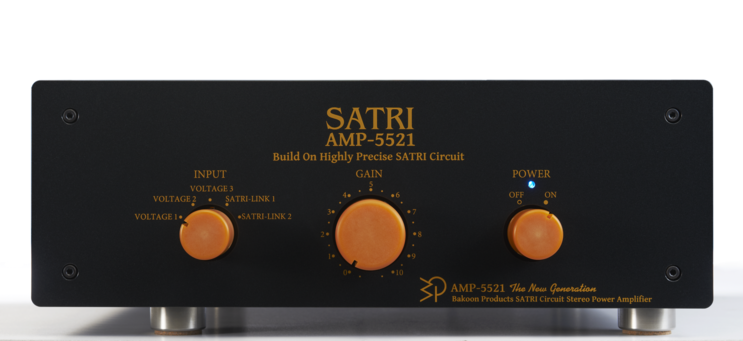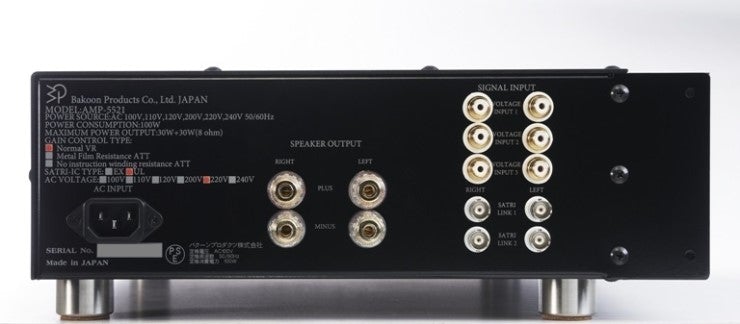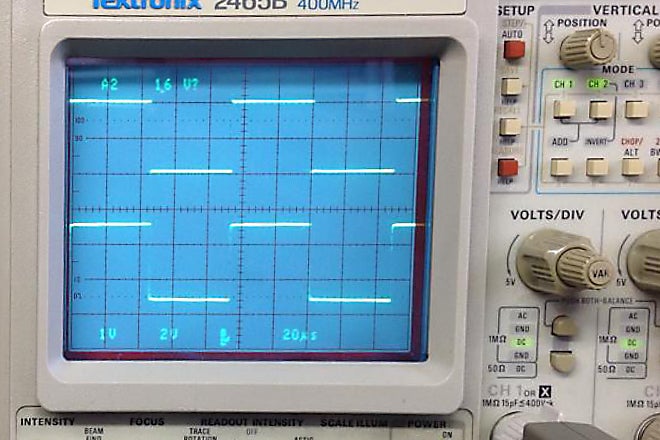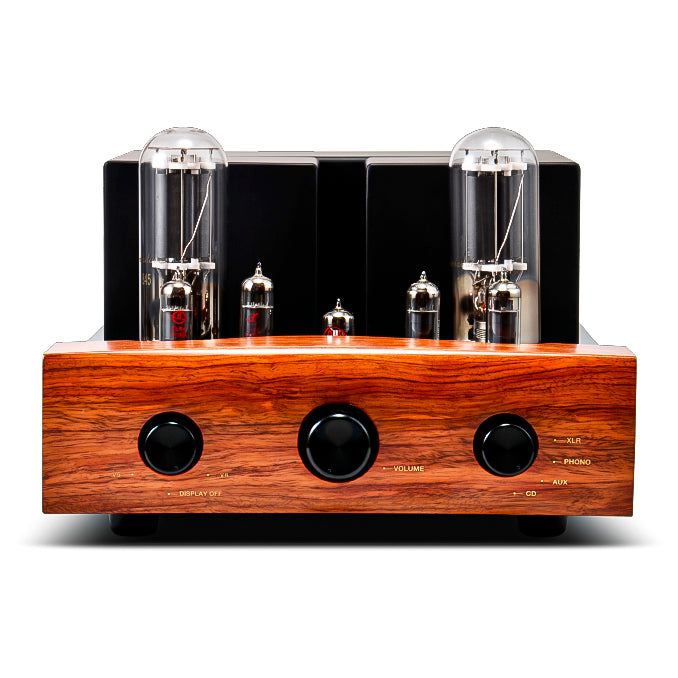※ Some specifications may be changed without notice.
Surface-mounted parts with no lead wires in the components that make up the amplifier are fully adopted The output is 35W + 35W stereo, and the mono BTL specification allows 100W output.
Four new design HBFBC circuits.

In addition to SATRI-IC, AMP-5521 MK4 uses a bipolar transistor instead of a lost J-FET, a constant current bias circuit compensated for temperature, a bias separation circuit on the output stage, a bias turbo circuit that takes up to 4 minutes to 30 seconds And most of the parts are surface mounted parts.
The number of parts exceeded 350 points.
The output is 35W + 35W stereo, and the mono BTL specification allows 100W output.
The most important feature is the use of surface-mounted parts that do not have lead wires in the components that make up the amplifiers. If there is a lead wire, the sound will be colored due to its material and nature. By eliminating the lead wire, we have revised the design method of the printed circuit board to put the parts on when using surface mounting parts. We have developed a number of new circuits that can achieve high accuracy by using surface mounting components with a wiring length of less than 1/4 of printed patterns that color like lead wires. Up until now, bias currents needed about 4 minutes to stabilize, but AMP-5521 succeeded in making it less than 10 seconds. In combination with SATRI speakers, realistic playback like a player in front of you is now possible.
Maximum output is 35W to reduce the heat generation of SATRI-IC.
The characteristic of this amplifier is the high accuracy of the circuit. Drift is stable with 10 micro V units.
The constant current source used for the bias circuit was changed from a CRD to a constant current circuit compensated for temperature
In addition, the components on the PCB were made surface-mounted components, which reduced inductance and floating capacitance and greatly reduced the elements affecting the music signal. Thanks to this, the incidental sound is no longer on the music. It sounds terrifyingly real.
BTL mode is great
The maximum output in normal mode was 35W, but it is 97W in BTL mode. Also, the distortion rate is 1 digit lower than normal mode. In the SATRI amplifier of no-feedback which cannot be lowered by negative feedback, it is also possible to make BTL to increase accuracy. The powerful sound of BTL mode is attractive.
| Maximum output | load/10% distortion: load/1% distortion: : BTL mode: load/10% distortion r: load/1% distortion: |
|---|---|
| Frequency Characteristics | 8Ω/1W; 20Hz:0dB, 20kHz:0dB, 50kHz:-0.6dB, 100kHz:-6.29dB 8Ω/10W; 20Hz:0dB, 20kHz:0dB, 50kHz:-0.7dB, 100kHz: -6.4dB |
| S/N ratio | VR max: -100dB, VR min: -127dB |
| Dimensions | 350(W)x130(H)x400(D)mm |
| Weight | 7.5Kg |
* The switching between stereo and BTL is set during the manufacture of amplifier substrates, so the specification cannot be changed by the customer.
Since the characteristic of SATRI amplifier does not multiply negative feedback, it is possible to increase that the transient characteristics are excellent and the distortion of the time axis is less.
This picture is the characteristic of AMP-5521 10kHz square wave.
The top is input and the bottom is output, and the load resistance is 8Ω.
In this way, there is no waveform disturbance at all.
There is no amplifier to reproduce such recording information in Moro
When you listen to a recording that pays attention to spatial expression, you can clearly see the sense of depth. One of the features of the SATRI amplifier is that noise is reduced when the VR is lowered, so the S/N when the VR is lowered is improved by 27db. Another feature is that there is little change in bandwidth depending on the output. Pinpoint localization feels good. Instead of the two J-FETs that are no longer available, it may be a feature of a buffer circuit consisting of 12 bipolar transistors and a temperature-compensated constant-current circuit. The accuracy of this circuit is far superior.
The AMP-5521 is also expandable, allowing users to use more speakers. An uninterrupted continuously variable resistor volume is standard, and an upgraded version such as a 23-stage non-inductive winding resistance attenuator version can be selected as an option. It is also possible to connect directly from DACs and other source devices, but of course there is a difference in sound quality compared to pair-matching with the company's preamps. The AMP-5521, which is a linear system using an R-core transformer, uses two outputs per channel to obtain an output of 35 W. When the gain is set at 9 o'clock, the volume of a typical solid-state amplifier is about 100-150 watts. The monoamp version has a 97W output. The output ratio also expands rapidly, which is not felt by ordinary linear amplification, and the output does not consume a lot of volume. Another indispensable feature of the Bakun amplifier is that it exhibits its unique charm when the entire system is configured. Compared to the previous version of the product, the sound is more agile, and the drive is incomparable. The phase characteristics are also very good, and the overall freshness and stimulation make the strokes easy and natural, making them "realistic". Even with fast beats and large orchestras, you can hear a stable and pure sound quality.
* Monthly Audio (http://www.audioht.co.kr)
A world of transparent playback sound like a spring. The moment I heard 5521, I thought, "It's like a Satri circuit, and it's like a Bacun amplifier." The sound was clear and beautiful like a spring. No distortion or coloring, amplification is done in linear, no time delay. These pure playback helpers are still SATRI-IC and "non-negative feedback," which limits output so that the Satri circuit can maintain optimal conditions, and is also an unwritten rule of Bacoon amplification.
The feature of 5521 is "pinpoint localization." When the sound from both speakers is overflowing instantly and cluttered to the center, the delicate sound image is tied with pinpoint. From the beginning, the sound seems to be dancing on the 5521 tablet in the center of both speakers. After all, it is a story that a sense of stability is good, but what happened in 5521? The supply of fixed bias current is such an important factor that the Bacoon amplifier enables ultra-precise regeneration. In general bias circuits, the bias current is controlled so that the temperature of the output transistor is kept constant, so that when the supply voltage rises, the bias current decreases and the bias current increases when the temperature of the output transistor decreases. In this way, the bias current is always variable, so the overall operation is also unstable. In comparison, Bacoon amplifiers provide a bias current at a level of 1/100,000 variability. This ultimately enables accurate amplification playback and appears to have played a decisive role in pinpoint imaging.
The driving force that 35W can't believe. What I felt again while monitoring 5521 is that the vacuum amplifier is strangely similar to the vacuum tube amplifier. 7511A If the numerical value of this output 15W fades KT150 it feels like driving two shots with a push pull, 5521 feels like driving 300B and two direct heat 3-pole tubes with parallel singles. The person pushing through the speaker is rather 7511, and the person who can afford the speaker is 5521. In the 7511, the extraordinary speaker driving ability unique to the push-pull vacuum tube can be felt with a relaxed output and delicate expressiveness unique to the direct heat 3-pole tube composed of parallel single at 5521. The most surprising thing in 5521 is the more brilliant bandwidth balance and signal-to-noise ratio (SNR) when the power and volume of the 35W are lowered, which is so good that the output seems to have no meaning.
Bill Evans album - "My Foolish Heart" knows that the audience coughing is a woman. Clearly, the particles of sound became bigger and harder. The simbal touch of the drum is powerful and the image has expanded. The rhythm also survived. The sense of space of the jazz club can be felt more easily. If you see that there is no significant change in SNR when the volume is raised, the silence of the current system seems very high. It captures all the whispers of the audience. In "Waltz For Debby (Take2)," the sound from both side speakers is like a holographic gathering in the center. The difference between bass and piano is not mischievous. Friction sounds and playing techniques touching the bass strings can be heard vividly. The advancement and regression of each instrument sound is amazing. The expression "depth" would be appropriate. Bill Evans' piano is clear and sharp.
Brian Bromberg's "Come Together" (Wood album) - 300 years of wood-based texture and how to think of it is phenomenal. That's where the powerful bass comes out. It's a life-size base. To play the Beatles melody with four bass strings, the finger must be counted. This momentum and energy can be felt as it is. Tapping, clipping, fingering... It is filled with gospel clapping in the church. The expression and texture of the sound are captured one by one, it is also the center of the stage, the perfect pinpoint, the life size...
Vladimir Ashkenazi and Ada Minor Shoshakov Beach Viola Sonata (DG) - overwhelmed by energy and space. I started to take a real sound shower. The front wall finally disappears and the speaker disappears. The instrument and tone became more three-dimensional. Overall, the viola is above and the piano is below. However, they seem to play separately and are elaborately woven together. The texture of weaving is elaborate. The treble part of the viola is a considerable energy sensation. The sense of color shines. Transfer, power, high profile, majesty, white, savage, raw... - Words come from many images. From this point on, the viola player breathes. This means that the player needs so much energy. It is recorded at 12:28 until Ashkenazi takes his foot off the pedal. 。
The fact that the bias current was completely dropped from the signal current, and the use of surface mounted components to eliminate the resistance values caused by the lead wire, also led to pure and precise regeneration of the music signal. Right. Bacoon amplifiers are a world of transparent playback sound without any distortion or coloring, and without a slight time delay. In addition, it is a world of amplification that is painfully fast, cool, super fast and ultra high precision.
* Monthly Audio (http://www.audioht.co.kr)
